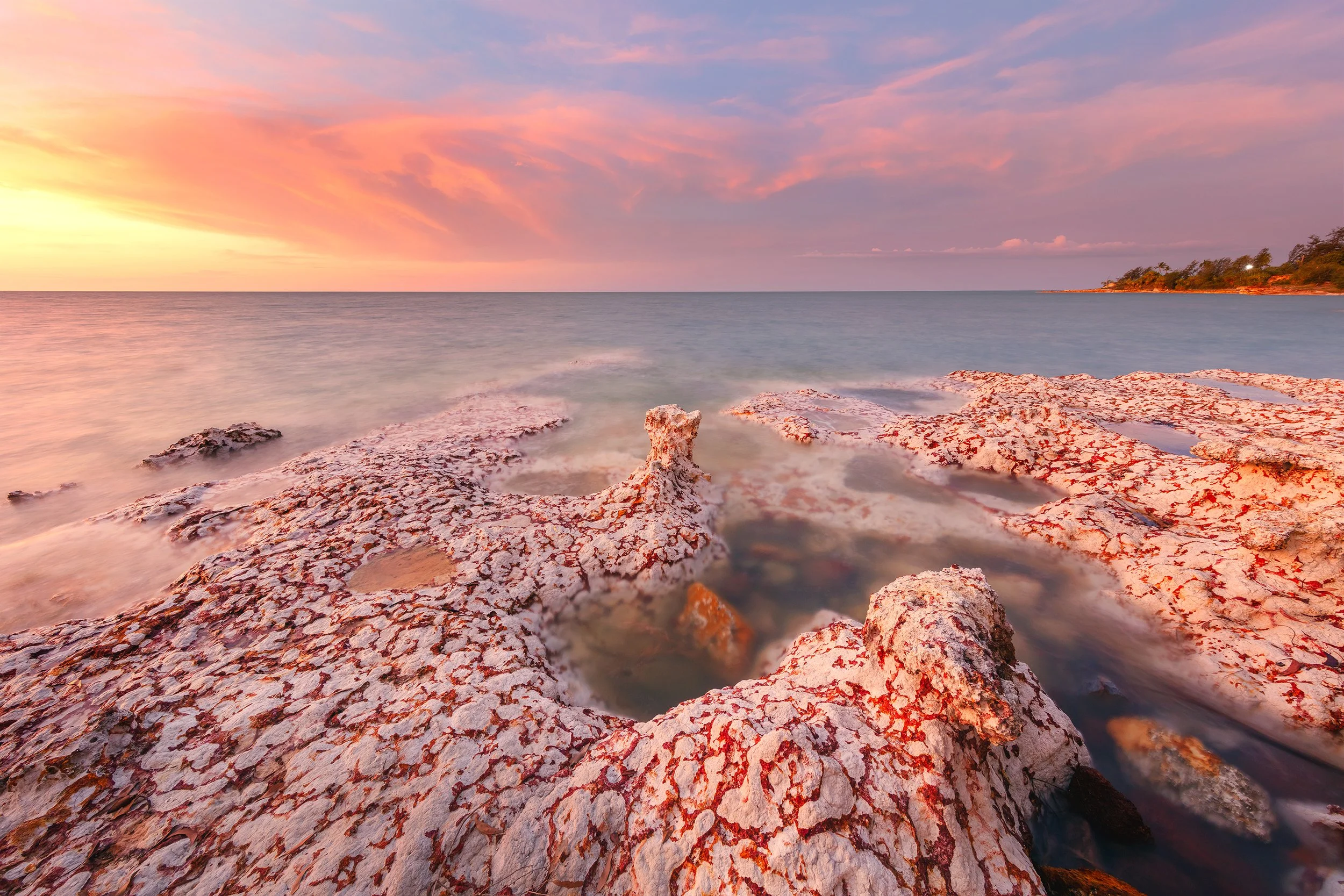Best sunset photography locations around Darwin
Darwin has the best sunsets!
My favourite time of year for sunset photography around Darwin is definitely the wet season. The sunsets are really next level with a bit of cloud, or dramatic light after storms have passed through.
Here’s a few of my favourite places to shoot sunset, seascape photography all within a 15-20 minute drive of the Darwin CBD.
Nightcliff Jetty
Probably the most photographed Darwin beach location, the jetty is great at both sunrise and sunset. Capture the sun setting behind the jetty or the “afterglow” hitting the rocks. Sunrise is great for less people around!
Darwin has huge tidal swing, which is important to remember when planning your shoot. The far left image below shows a tide height of around 1.5m, but tides can reach 8m which can reach the top of the jetty especially in stormy weather!
Nightcliff Foreshore
Nightcliff generally is a beautiful spot for photography, typically at sunset but there are a couple of locations at the northern end of the foreshore that are great at sunrise too.
I’ve written an entire blog just on locations at Nightcliff Foreshore, including maps and tidal tips. Check it out here.
Casuarina Coastal Reserve
The coastal reserve encompasses Casuarina Beach and Lee Point Beach and surrounding bushland, one of Darwin’s longest stretches of beach. To me, it’s a more difficult location to photograph, as parts of it are devoid of any foreground interest. I’m no stranger to dragging a bit of driftwood around the beach to make a composition where just sand and sea isn’t enough! (Wet season is the best time to find it, just FYI!)
However, for those who know the area there are a couple of my favourite spots to shoot within the reserve. Casuarina Beach has Dripstone Cliffs, which are some of the tallest coastal cliffs in the Darwin area. The boundary between Casuarina Beach and Lee Point Beach is a creek known as Sandy (or Sandfly!) Creek, which is one of my favourite places to photograph, at the right tide.
It’s a bit of a walk to reach the creek, which is it’s most photogenic on the Lee Point (northern) side. This means you have to park at the Lee Point carpark and walk around 1.5km south to reach the creek mouth. If the tide is too high, you’ll have to figure out another route as there are a series of small creeks to cross on the journey.
My favourite time to shoot these mangroves is at sunset, between a 6.2m and 7m tide height. I prefer an outgoing tide to wash away the footprints of walkers!
Lee Point Soldiers
East Point
East Point is a nature reserve around 5 minute drive from the Darwin CBD. Known for it’s military history, birdwatching and beautiful coastal pathway which explores cliffs, mangroves and beaches.
I’ve written a full guide on East Point too, with maps and what you can find along the coast, which you can find here.
Other places around Darwin
One of Darwin’s most visited beaches for tourists with the popular Mindil Beach Sunset Market, Mindil is another beach I find difficult to photograph due to lack of interesting structure on the beach. The only time I shoot at Mindil is on a middle tide, around 3.5 - 4.5m at the northern end of the beach for the unique shapes in the rocks.
Fannie Bay is also close by, my favourite rocks to photograph there are just north of the popular Trailer Boat Club, although the structure of the sand there seems to change over the wet seasons and not as much of the rocks are as emerged as they have been in previous years!
There are also a few spots around the Darwin CBD (down off the Esplanade), where I like to shoot for the mangroves, including Lameroo Beach and Doctor’s Gully, or down near Deckchair Cinema. Most of these kinds of locations I have scouted out specifically for the photograph I want to create and are not especially appealing to those who aren’t specifically photographing mangroves!






















